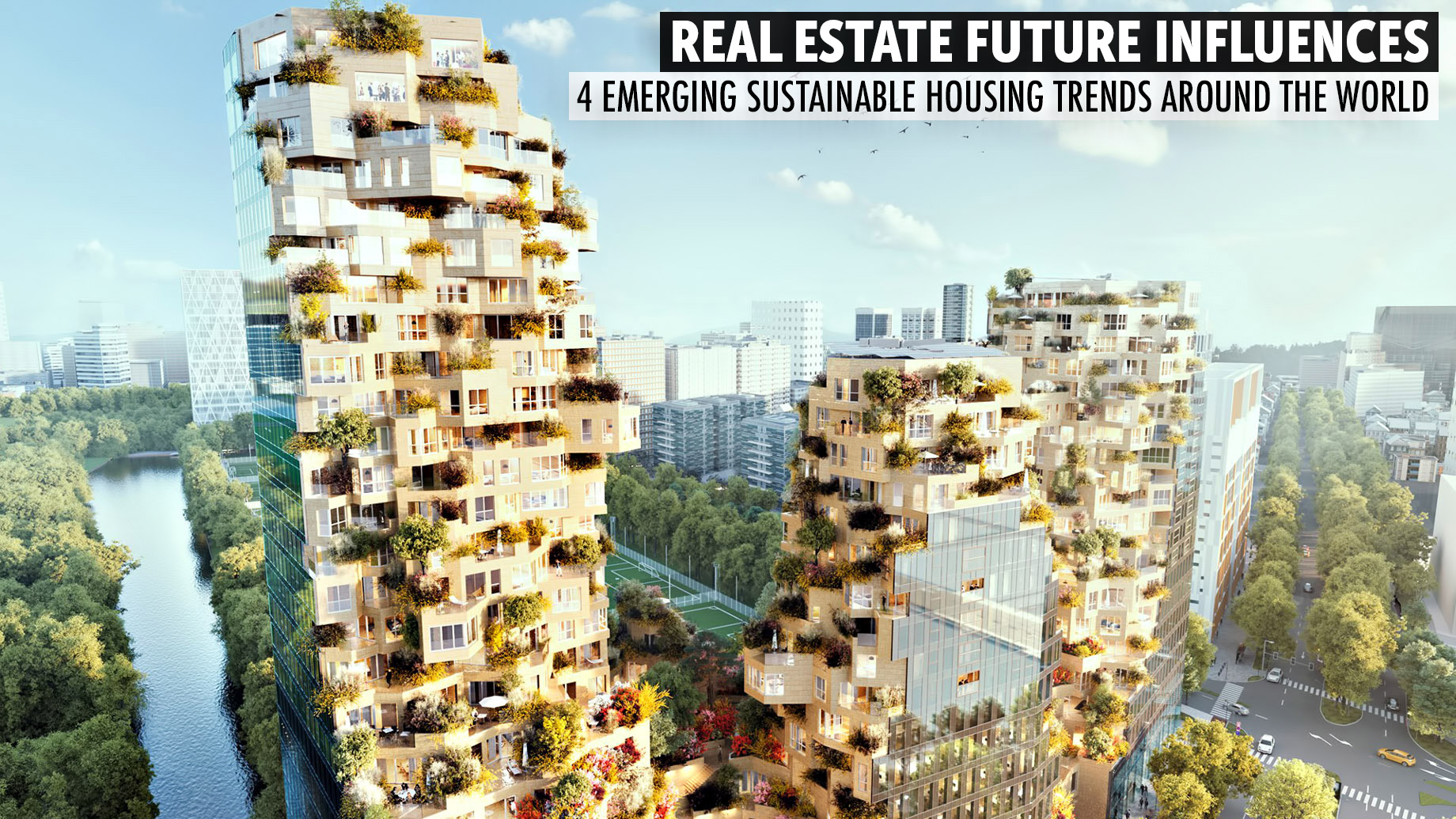
Sustainable housing is all about creating energy-efficient spaces, eco-friendly homes and reducing our carbon footprint. We suggested a few eco-friendly trends in ‘Going Green – Incorporating Sustainability in Property Renovations and Home Maintenance’, like renewable energy, conserving water and saving energy through proper insulation. Now we’d like to take a look at four more trends from around the globe to give you some inspiration, whether you’re thinking of renovating or building a new home.
1. Heating and Power
The future of heating in the UK luxury apartment sector is looking at renewable energies like geothermal, solar and wind. One project being developed in Hertfordshire, just 24 miles northwest of London, is going to be the pinnacle of sustainable living. Lumiere Developments, who built the Beacon tower, say that the building will generate its own power, mainly through solar panels integrated into the balconies and wind turbines, to provide hot water to the building’s residences.
This follows a trend in the UK where many homeowners are now adopting sustainable options to heat their homes. UK-based heating and plumbing providers HomeServe detail how many homeowners are choosing to upgrade their boilers to new energy-efficient ones. In the UK, it has been a legal requirement since 2007 that all new boilers must be highly efficient condensing boilers, to lessen the residential carbon footprint.
2. Net-Zero Homes
An emerging trend in the United States, most notably in California, is the luxury net-zero home. In fact, the state of California recently mandated that all new residential buildings be net-zero by 2020. The idea behind these homes is that they create the same amount of renewable energy as they consume, effectively becoming carbon neutral. Net-zero homes are built much more efficiently and eco-friendly than typical buildings. On the outside, they’re built to optimize energy efficiency with significant airtight construction, heat-reflecting roof tiles and efficient eco-materials for walls and foundations.
On the inside, they provide all the luxuries and amenities in luxe homes but do it more efficiently and healthily. The U.S. Department of Energy indicates that the technologies integrated into net-zero homes allow for temperature regulation, low humidity, less noise and minimize exposure to dangerous pollutants.
3. Energy Efficiency in Cooling
Known for its wealth, where money is no object for its residents, Dubai is focusing on sustainable living right now. Apart from solar solutions, Dubai is meeting energy conservation in other ways for its luxury buildings and homes. Landmarks like the Burj Al Arab features exteriors made entirely from insulated glass, with a low-emissivity coating that reduces energy loss by as much as 30% to 50%.
Additionally, more than 500 villas, in The Sustainable City Dubai project, were built close together and face north so that they keep each other in the shade. This arrangement allows for more energy savings. While the sun falls onto their facades in the early morning and late afternoon, the orientation and design choice allows air conditioning units to be 40% smaller. Coupled with reflective paint and advanced construction materials, a 3,000 to 4,000 square foot villa’s energy consumption is cut in half compared to other standard villas in Dubai.
4. Biophilic Design
Biophilia refers to a human’s innate affinity to connect with nature and biophilic design, therefore, seeks to connect humans with nature. In Australia, new trends in sustainable real estate are emerging that are prioritizing the occupant’s health. The Daily Telegraph explains how biophilic designs aren’t just sustainable, they consider all our senses. This is achieved through a visual, auditory and material connection to nature by using natural materials like wood, stone, water and most importantly plants.
In addition to breathing life into a luxury space, plants improve physical and mental wellbeing, remove toxic airborne pollutants and improve air quality by more than 25%.
Biophilic homes are designed with large openings that allow homeowners to look out onto things like their garden, a waterfall or fountains that provide important auditory stimuli. Using materials that have a connection to the location of the home has become very popular as well, with sandstone being used in Sydney and Bluestone in Melbourne as just some of the example uses.